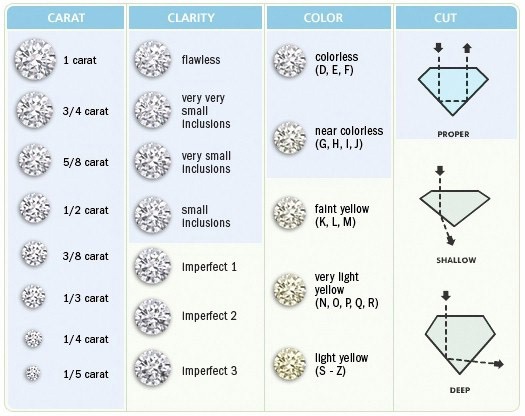Selecting a Diamond
It Feels Like Home!

Diamond Quality Decoded: Expert Tips for Selecting a Diamond.
Selecting a diamond can be an exciting but daunting task, as the quality of the stone can significantly impact its appearance, value, and durability. Understanding the key factors that determine diamond quality is essential for making informed purchasing decisions and ensuring that you get the most value for your investment. In this guide, we’ll unravel the mysteries of diamond quality and share expert tips to help you navigate the world of diamond buying with confidence and clarity.
The Four Cs: Cut, Color, Clarity, and Carat Weight:
- Familiarize yourself with the Four Cs, the universally accepted standards for assessing diamond quality.
- Understand how each of these factors contributes to the overall beauty and value of a diamond, and prioritize your preferences based on personal taste and budget.
Cut: The Sparkle Factor:
- Recognize that the cut of a diamond has the greatest impact on its brilliance, fire, and overall beauty.
- Look for diamonds with excellent or ideal cut grades, as these stones are expertly crafted to maximize light reflection and internal sparkle.
Color: The Invisible Hue:
- Understand that the color grade of a diamond refers to the absence of color, with higher grades indicating a more colorless appearance.
- Consider factors such as personal preference, metal choice for the setting, and budget when selecting a diamond color grade, keeping in mind that subtle differences may not be visible to the naked eye.
Clarity: The Flawless Standard:
- Recognize that clarity refers to the presence of internal and external imperfections, known as inclusions and blemishes, within a diamond.
- Balance clarity considerations with budget constraints, as diamonds with higher clarity grades (e.g., Flawless or Internally Flawless) command premium prices but may not be necessary for achieving a visually flawless appearance.
Carat Weight: Size Matters, but Quality Counts:
- Understand that carat weight refers to the size of a diamond and is often the most visible aspect of its appearance.
- Recognize that while carat weight is important, it should not be the sole determinant of a diamond’s quality, as other factors such as cut, color, and clarity also influence its overall beauty and value.
Certification and Documentation:
- Purchase diamonds that have been certified by reputable gemological laboratories, such as the Gemological Institute of America (GIA) or the American Gem Society (AGS).
- Review the diamond’s certification report to verify its quality characteristics and ensure transparency and authenticity in the purchasing process.
Budget Considerations:
- Establish a realistic budget based on your financial situation and priorities, and allocate funds accordingly to prioritize the Four Cs based on your preferences and values.
- Consider alternative options such as lab-grown diamonds or diamonds with slightly lower grades in certain areas to maximize value without compromising quality.
Personal Inspection and Comparison:
- Inspect diamonds in person whenever possible to evaluate their appearance, brilliance, and overall quality.
- Compare multiple diamonds side by side to assess differences in cut, color, clarity, and overall value, and trust your instincts when making the final decision.
Selecting a diamond, understanding the Four Cs, prioritizing your preferences and budget considerations, and conducting thorough research and inspection, you can confidently navigate the process of selecting a high-quality diamond that meets your expectations and exceeds your dreams. Whether you’re purchasing an engagement ring, anniversary gift, or personal indulgence, investing in a diamond of exceptional quality ensures a timeless and enduring symbol of love, beauty, and luxury for generations to come.
